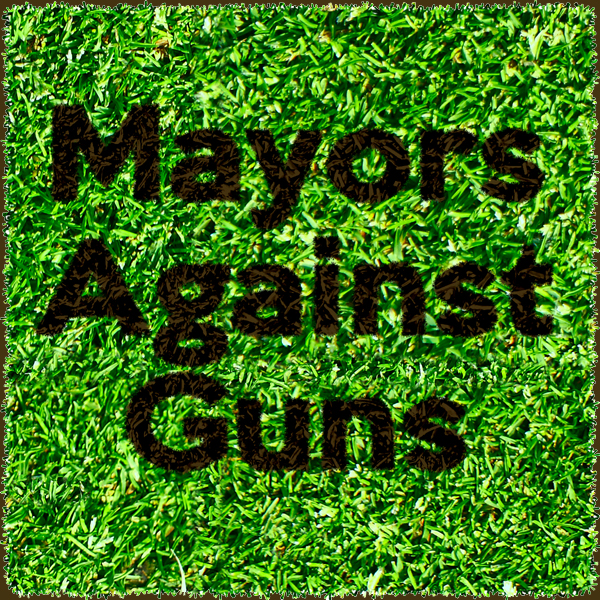When Heidi Yewman first published her highly controversial piece in Ms. Magazine, I thought she was a bit irresponsible with how she approached the topic of gun ownership. After reading her continuing drama, now published by the Daily Beast, I believe she lacks the moral clarity, level headedness, and common sense required of someone being a gun owner. On this we agree. Where we disagree is that the government’s job is to enforce responsibility, and that training can fix the problem for someone like her. Training will not help Heidi Yewman; she quite simply lacks the emotional makeup necessary for gun ownership. Perhaps that is her point, but her real problem is not something the government can successfully evaluate, and she should really stop projecting her own inadequacies onto other people. I thought a bit how to deal with her article, but a good old fashioned fisking is about all I can come up with.
I put my purse on the counter and then spent the next hour out on the back deck. Walking into the kitchen to refresh our drinks, I noticed my purse with the 9mm Glock still inside it. I’d forgotten to lock it up! Panic set in as I realized my teen son was playing videogames just 10 feet away.
If you’re a forgetful person, off body carry is not the correct option for you, and this is why. Also, your 15 year old son is old enough to be trained in responsible gun handling. If he had proper training, if he managed to find your Glock in your purse, it would be no danger to him. If you have small children, or unruly children, you quite simply need to learn to be more responsible, and perhaps consider a different carry option.
A gun in a home is 43 times more likely to be used to kill a family member than kill someone in self-defense.
No, it’s not. This is based on a study that has been long discredited as junk science.
 I lie awake thinking: “Is someone breaking in? How fast can I get to the gun? Will they hear me? How much time do I have before they get to my bedroom? What if they go to my son’s room first? Will I shoot them in the face or heart or stomach?†And then I think: “How in the world would I live with myself knowing I took a life?â€
I generally encourage anyone buying a firearm for self-defense to give serious thought as to whether they are capable of killing another in self-defense. Not everyone has the emotional makeup to do it. It is a serious question, and I don’t blame her for giving it thought. But nonetheless, she seems awfully fearful. As her article continues, I can’t help but come to the conclusion that her fearfulness rises to the point she ought to consider counseling.
For example, do I tell my 15-year old where the gun is so he can help if someone breaks into our house? My husband travels a lot, so often it’s just the teen and me.
That depends a lot on the teen, your relationship with him, and whether he’s been properly trained in safe and responsible gun handling, as is your moral duty as a gun owning parent to teach him.
A few years ago, a friend of mine’s 16-year-old son was given the combination to their gun safe so he could help protect his family. The very next day, after being cut from his basketball team, he opened the safe, went to the back yard, and killed himself with that gun.
Do you think your son is suicidal? If he is, why aren’t you getting him help? And yes, if he is suicidal, or your relationship with your son has issues, then no, he should not have access to the firearm.
Since having the gun I’ve had two repairmen, a carpet cleaner, and a salesmen in my home. If the gun’s for self-protection, it’s not going to do any good in the safe, but it’s not really practical to have the gun pointing at them as they work.
This would land you in jail, and rightfully so. The solution to this, if you’re concerned about a strange man in your house with you alone, is to use on-body carry with the firearm concealed and in a holster. Pointing a gun at someone not attacking you is morally wrong and illegal, but you know that, of course.
How else would I eliminate the element of surprise if I were attacked? Suspiciousness and fear of people is new to me, and I don’t like it. Living with a gun has not been easy.
If you were carrying concealed on-body, you’d have an element of surprise on your part as well. Learn how to draw and fire from concealment safely and properly. It’s not rocket science here. If you’re suspicious and fearful of people, this is something you really ought to seek help with, as it amounts to an unhealthy phobia.
The urine smell was particularly strong in the grimy, dimly lit downtown parking garage’s stairwell. I was late for a meeting and barely noticed the large man enter behind me. When I got to the second floor I became nervous, and the Oprah episode where a man attacks a woman alone in a situation just like this played in my head. I thought about the 9mm in my purse as I clumsily continued down the stairs in my skirt and heels. He followed me. I looked back at him so he knew I knew he was there (like Oprah’s expert suggested.) I thought: “Should I pull the gun out? Should I point it at him?†I realized the gun wouldn’t do me any good because he was behind me.
I would strongly advise you to not take self-defense advice from Oprah Winfrey. I’m pretty certain she is not a subject matter expert. Also, if anyone came to me an recounted this experience to me I would advise them to immediately stop carrying a firearm in public, and rethink whether they had the emotional and psychological makeup to continue the practice. This isn’t something training can fix. This is an emotional problem that you need psychological counseling to overcome. This is not an issue with carrying the gun.
Already, I’d been to the grocery store, church, the bank (yes, in a bank!), business meetings, restaurants, Starbucks, and even yoga.
Were you planning to rob the bank? If not, then what’s the problem? You’re not a bank robber, are you? Did you even think about robbing the bank?
I played two tennis matches with the gun in my backpack next to the court, and I went to three parties in homes where children played just feet from the pile of guests’ jackets and purses, including mine with the gun inside.
I can’t even begin to tell you how utterly irresponsible this is. You are not the kind of person who should be carrying a firearm in public. This is a situation where the gun is best left in a locked vehicle or at home. Though, I’ve managed to keep a firearm safely concealed while playing tennis, just wearing some shorts and an untucked t-shirt.
The worst part was running into friends as I ran errands. I’m a hugger, and I learned very quickly that hugging is not a good idea when wearing a weapon. I stuck my hip out awkwardly to avoid detection.
This part makes me skeptical she was actually carrying. How do people hug you? I’ve never had this problem, expect when children hug me who can only reach up to my waist (the only time I’ve ever been made is by children, actually). But then again, most new carriers are very awkward, and believe that other people can see or detect the gun when they really can’t.
I couldn’t go into Peet’s Coffee & Tea, and I had to leave the gun in the car when I spoke at a community college about gun violence, which was ironic, because 89 of the 90 crimes reported there last year were car break-ins. About half a million guns are stolen every year, putting them directly into the hands of criminals. I should have just left it at home.
And maybe the solution is not creating situations where people have to leave a gun in their car. In Pennsylvania, because we have so few restrictions on places you can carry, I very rarely find myself in a situation such as this.
I thought the gun would make me feel more powerful, more confident, and less fearful. I was wrong. All I felt was fear. Physically taking the gun out of the safe and putting it in a holster on my hip literally reminded me that I was going out into a big bad scary unsafe world. There were days when I put the gun back in the safe and stayed home because it simply took too much energy to be scared. It was easier to be at home without the worry and responsibility of being “the good guy with the gun.â€
You feel frightened because you have emotional issues. It may be that the gun exaccerbates the issue, but you probably assume most of us who carry also feel this way. We do not. You would need professional counseling to get over your phobias if you were really interested in carrying a firearm for personal protection. I would advise counseling if you were actually serious, before continuing with carry for personal protection.
The man in the stairwell probably doesn’t remember walking down those stairs. I will never forget it. The surge of adrenaline and fear made an imprint on my psyche. If I’d confronted him with the gun, would he have fought or fled? Either way, one of us might be dead or seriously injured.
If he had drawn his own gun and shot you dead, he would have been justified in the eyes of the law. If you had shot him, you’d have been indicted for murder. Why? Because you would have been the attacker.
She later went and turned in the gun to an artist who will turn it into a sculpture. This was the smartest thing she did during the whole series, because she is psychologically unfit to carry a firearm. But that was her point, wasn’t it? Because she knows she’s unfit. Her implication, and fallacy, is that you and I are likewise unfit. This is a classic case of projecting your own inadequacies onto others.
One of the fundamental differences between us and the gun control advocates is that we generally trust that ordinary people will, much more often than not, do the right thing. Even Heidi Yewman, as someone who is not generally criminally irresponsible, knows what she’s doing is wrong and irresponsible. She committed those wrongs to make a point. She believes the government needs to step in and restrict everyone. She would put the decision in the hands of a bureaucrat, because she assumes you and I, and most everyone else, are unable to make that call.
It’s clear that concealed carry permit holders, even in states that require no training, are extremely law abiding compared to the general population. Most people do not possess her fear of others. Heidi Yewman is writing a prescription for a disease that doesn’t exist anywhere except her own mind. That’s something she has to personally wrestle with, but in doing so, it would be nice if she left the rest of us out of it.



